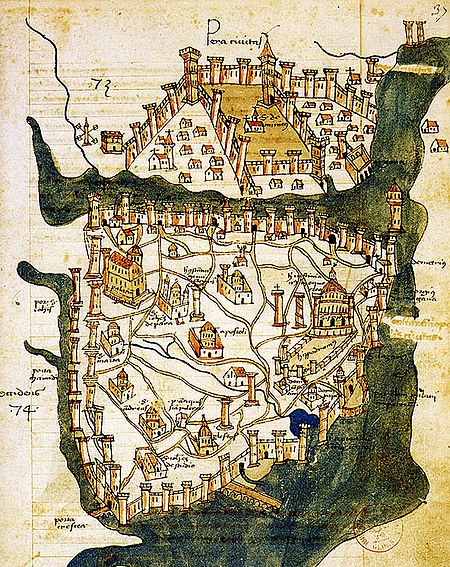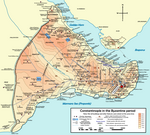Siege of Constantinople (1422)
1420s in the Byzantine Empire1422 in Europe1422 in the Ottoman Empire15th century in IstanbulBattles of the Byzantine–Ottoman wars ... and 4 more
Conflicts in 1422Sieges involving the Byzantine EmpireSieges involving the Ottoman EmpireSieges of Constantinople

The first full-scale Ottoman siege of Constantinople took place in 1422 as a result of the Byzantine Emperor Manuel II's attempts to interfere in the succession of Ottoman Sultans, after the death of Mehmed I in 1421. This policy of the Byzantines was often used successfully in weakening their neighbours. When Murad II emerged as the winning successor to his father, he marched into Byzantine territory. The Turks had acquired their own cannon for the first time by the siege of 1422, "falcons", which were short but wide cannons. The two sides were evenly matched technologically, and the Turks had to build barricades "in order to receive ... the stones of the bombards".
Excerpt from the Wikipedia article Siege of Constantinople (1422) (License: CC BY-SA 3.0, Authors, Images).Siege of Constantinople (1422)
Kennedy Avenue, Istanbul
Geographical coordinates (GPS) Address Website Nearby Places Show on map
Geographical coordinates (GPS)
| Latitude | Longitude |
|---|---|
| N 41.0167 ° | E 28.9769 ° |
Address
Sirkeci-1 İsbike İstasyonu
Kennedy Avenue
34110 Istanbul
Türkiye
Open on Google Maps








